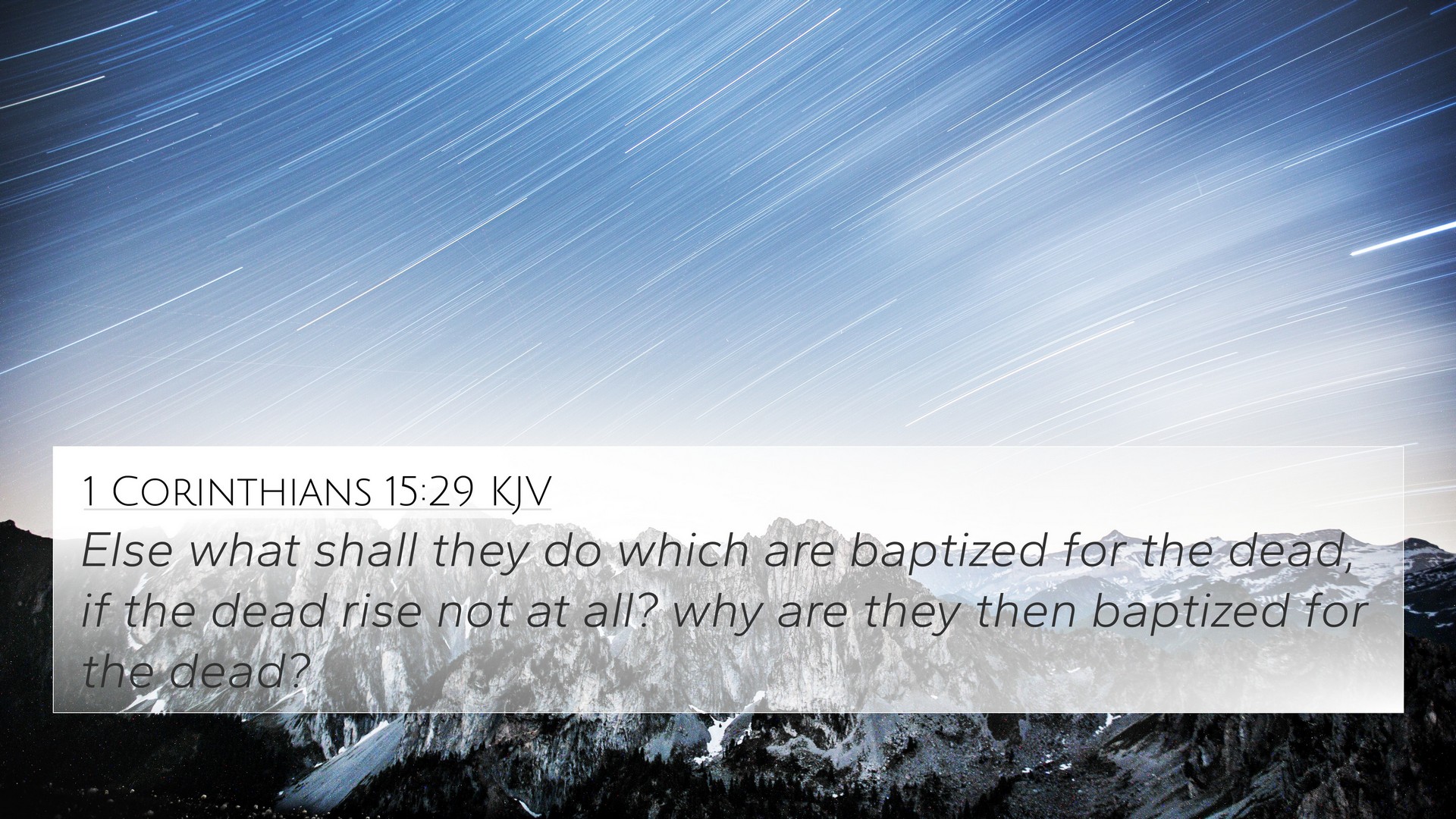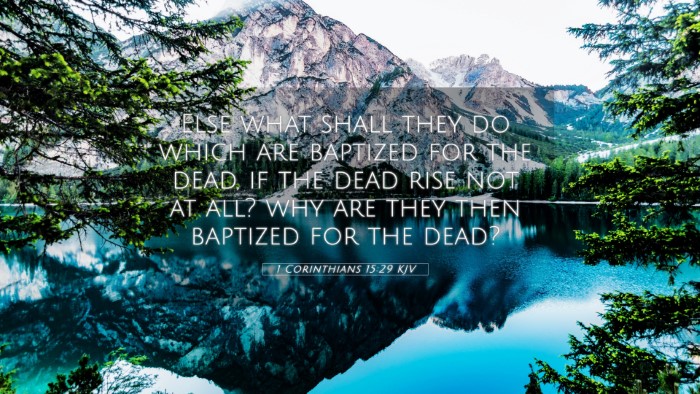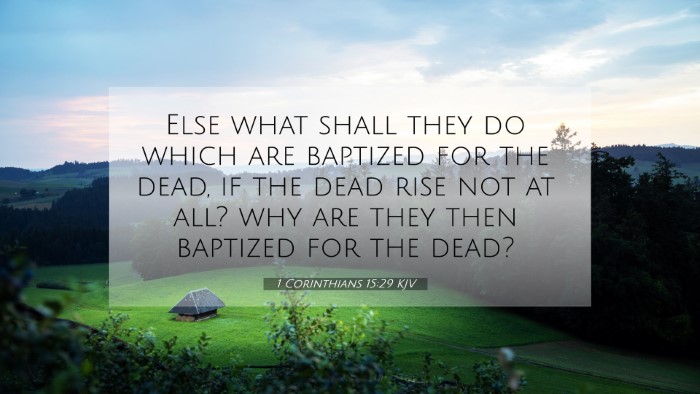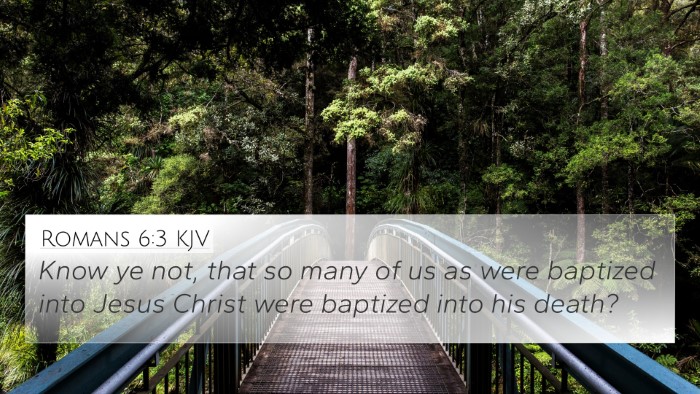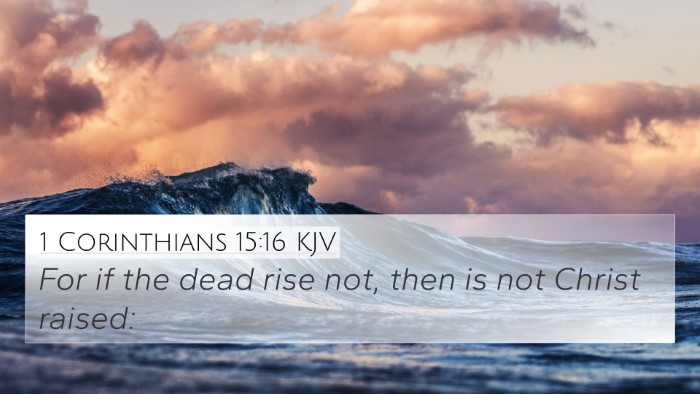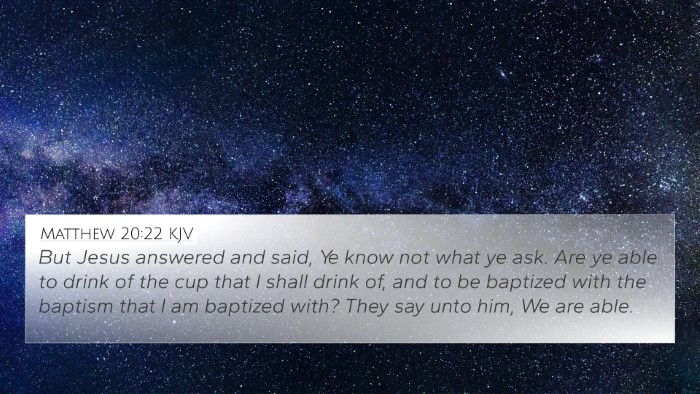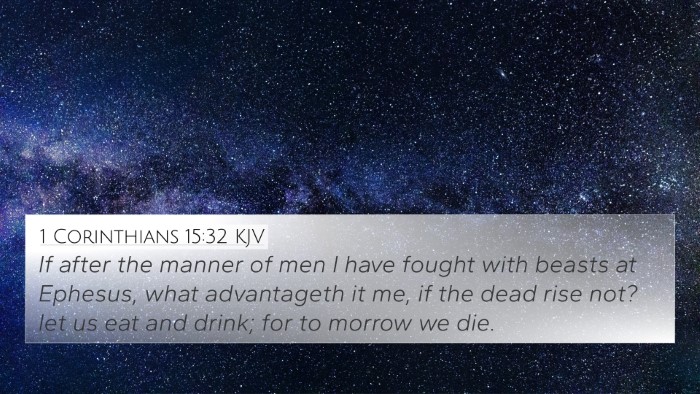Understanding 1 Corinthians 15:29
1 Corinthians 15:29 presents an intriguing and somewhat challenging statement from the Apostle Paul: "Else what shall they do which are baptized for the dead, if the dead rise not at all? why are they then baptized for the dead?" This verse has led to various interpretations among theologians and scholars throughout history. Below is a comprehensive analysis combining insights from public domain commentaries including those of Matthew Henry, Albert Barnes, and Adam Clarke.
Verse Context
This verse is situated within Paul's larger argument about the resurrection of the dead. He defends the truth of the resurrection, which was a point of contention among the Corinthians. By referencing the practice of baptism for the dead, Paul highlights the inconsistency in denying the resurrection while participating in rites that assume it.
Commentary Insights
Matthew Henry's Commentary
Matthew Henry emphasizes that this practice of baptism for the dead, which appears specific and mysterious, indicates a belief in an afterlife among some early Christians. He interprets it as an acknowledgment of the resurrection’s necessity. Henry argues that if there is no resurrection, such practices become meaningless. He encourages the faithful to consider the implications of their beliefs.
Albert Barnes' Notes
Albert Barnes approaches the verse with caution. He suggests that the phrase "baptized for the dead" may refer to a specific, possibly temporary, practice within the Corinthian church. Barnes highlights that Paul’s rhetorical question assumes an established belief in resurrection, thus labelling any inconsistent actions as contradictory. For Barnes, this verse serves as a call to deeper reflection on the logical implications of resurrection-denial.
Adam Clarke's Commentary
Adam Clarke takes a more extensive view, providing historical context regarding the practice of baptism for the dead, suggesting it might not be widely endorsed but rather a local custom. Clarke emphasizes the importance of understanding that the verse underscores faith in resurrection, detailing how the act of baptism itself symbolizes a new life, underlining the connection to Christ’s resurrection.
Theological Implications
The various interpretations of this verse suggest that it highlights key theological concepts:
- Faith in Resurrection: The underlying message revolves around the necessity of believing in life after death.
- Consistent Belief: Paul's argument serves as an appeal to logical consistency within Christian doctrine.
- Early Christian Practices: The mention of baptism for the dead reflects on early church practices and challenges contemporary understanding.
Bible Cross References
This verse can be cross-referenced with several other scriptures to deepen understanding:
- 1 Corinthians 15:12-14: Paul discusses the implications of denying the resurrection.
- Hebrews 6:2: Lists foundational doctrines including resurrection from the dead.
- Romans 6:4: Speaks about being buried with Christ through baptism into death.
- Matthew 22:31-32: Jesus affirms the existence of life after death.
- John 11:25-26: Jesus claims to be the resurrection and the life.
- Acts 10:42: Peter emphasizes preaching the resurrection of Jesus.
- Colossians 2:12: Discusses being buried with Christ in baptism and raised through faith.
Connecting Themes
In this exploration of 1 Corinthians 15:29, several themes emerge that link this verse to broader biblical theology:
- The Resurrection: Central to Paul’s doctrine and the entire New Testament.
- Life after Death: Affirmed in both Testaments, encouraging believers to hold fast to hope.
- Faith and Practice: The relationship between belief systems and their practical manifestations in the faith community.
Conclusion
1 Corinthians 15:29 prompts believers to consider the implications of their faith, particularly concerning resurrection and eternal life. The insights from Matthew Henry, Albert Barnes, and Adam Clarke converge on the significance of this verse in affirming a cohesive belief system that aligns faith and practice. This scripture stands as a pivotal point for understanding early Christian practices and the overarching narrative of hope in scripture.
Further Study
To gain a deeper understanding of how 1 Corinthians 15:29 connects with the rest of the Bible, here are some suggested methods:
- Using a Bible Concordance: Identify related verses and themes.
- Cross-reference Bible Study: Utilize a Bible cross-reference guide to explore interconnected scriptures.
- Comparative Study of Pauline Epistles: Analyze other letters of Paul that address resurrection themes.
